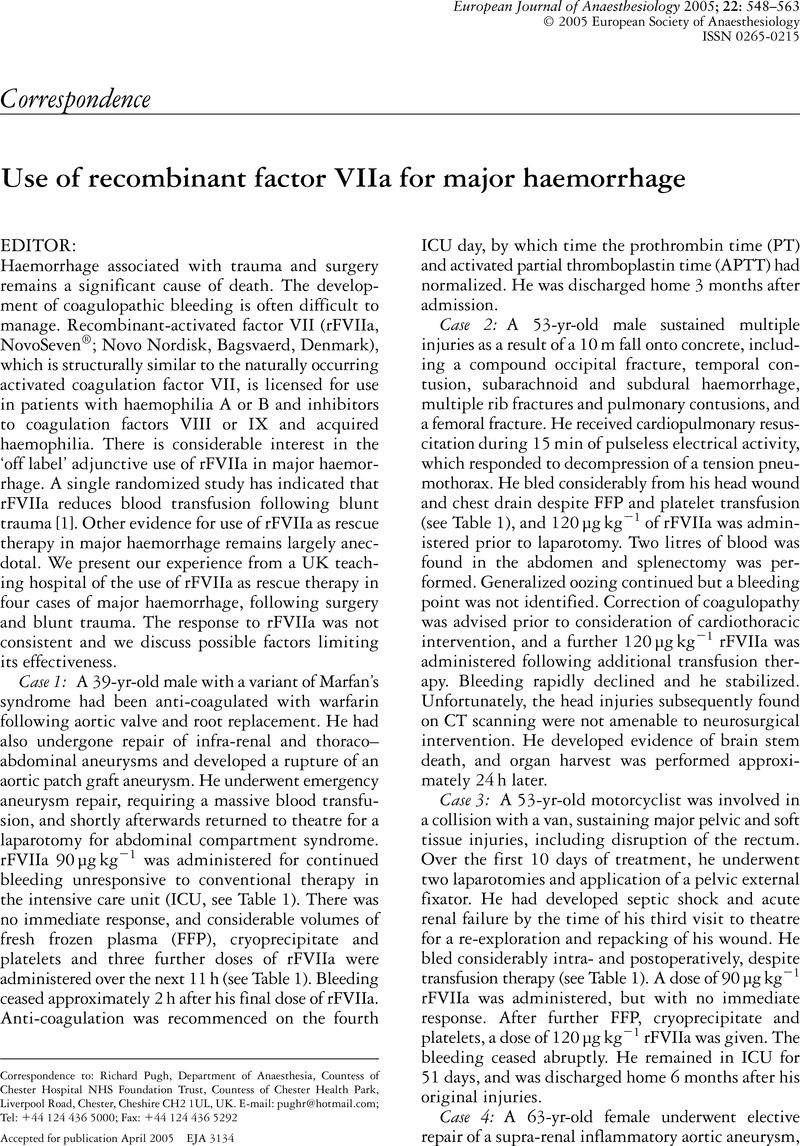Crossref Citations
This article has been cited by the following publications. This list is generated based on data provided by Crossref.
Blanloeil, Y.
Rigal, J.C.
Bastien, O.
Carteau, J.P.
Toussaint-Hacquard, M.
and
Lecompte, T.
2006.
Facteur VII recombinant et activé pour le contrôle du saignement en chirurgie cardiovasculaire : valider l'efficacité et la sécurité d'emploi.
Annales Françaises d'Anesthésie et de Réanimation,
Vol. 25,
Issue. 1,
p.
2.
Buckmiller, Lisa M.
Richter, Gresham T.
Waner, Milton
and
Suen, James Y.
2007.
Use of Recombinant Factor VIIa During Excision of Vascular Anomalies.
The Laryngoscope,
Vol. 117,
Issue. 4,
p.
604.
Warren, O.J.
Alcock, E.M.H.
Choong, A.M.T.L.
Leff, D.R.
Van Herzeele, I.
Darzi, A.W.
Athanasiou, T.
and
Cheshire, N.J.W.
2008.
Recombinant Activated Factor VII: A Solution to Refractory Haemorrhage in Vascular Surgery?.
European Journal of Vascular and Endovascular Surgery,
Vol. 35,
Issue. 2,
p.
145.


